The Best Lemon Curd Donuts
Lemon curd donuts are made with soft brioche dough and filled with sweet and tangy lemon curd.
These lemon-filled donuts are amazing, both to make and to eat. They use a soft and smooth brioche dough that can be made in a stand mixer or by hand. They are fried donuts, cut as circles so they puff up big and round.

Then they are filled with tangy and bright lemon curd and dusted generously in powdered sugar.
They are cut like the Italian Bomboloni doughnuts which are excellent to fill because of their round shape. I use this shape for these caramel-stuffed donuts too!
The dough
These lemon-filled doughnuts are made with brioche dough. Brioche dough is enriched with a large amount of butter and eggs.
For the best flavor, make the dough a day ahead of time, so it undergoes a cold refrigeration period which brings extra flavor to the dough. This is optional though and you can make them all in one afternoon if you like.

The flour
This recipe works best with flour with around 11% protein. All-purpose flour protein levels can vary between brands and the type of wheat in them. The name of the flour itself can vary between countries too. It’s best to check protein levels on the bag rather than just the name of the flour.
Equipment
Stand mixer – The dough takes around 10 minutes of mixing to develop the gluten. This is easily done in a stand mixer, however, it can be done by hand too, you just need a bit of elbow grease!
A cookie-cutter or jar lid to cut the donuts, around 3.5 inches/9 cm in diameter.
Parchment paper – The donuts can be fried on parchment paper, which makes transferring them easier. If you don’t have parchment paper, you can transfer the donuts without it but it can be a little trickier as the dough is quite soft.
A deep fryer or large pot and candy thermometer – If you’re not using a deep fryer (which usually comes with a thermometer) you’ll need a candy thermometer for this. One that can handle reading a high temperature.
The ingredients
Find the actual ingredient amounts in the printable recipe card at the bottom of this post! Here is a run down of what you need for these lemon curd donuts –
- All-purpose flour – one with a protein level of around 11%. This protein content is enough to develop the gluten but not too much that the donut becomes chewy.
- Yeast – Either instant yeast or active dry yeast can be used. Instant yeast will rise faster than active dry yeast.
- Milk – warmed to lukewarm.
- Large eggs.
- Granulated sugar.
- Vanilla paste or extract
- Salt.
- Butter – There is plenty of butter needed as it’s an enriched brioche dough. You can use salted or unsalted butter, at room temperature.
- Lemon curd – You can use homemade lemon curd or store-bought curd.
- Powdered sugar to coat.
For the homemade lemon curd, you will need –
- Eggs
- Fresh lemon juice and zest
- Granulated sugar
- Salt
- Butter
The method
The dough
In a bowl of a stand mixer fitted with a dough hook, or a mixing bowl, add the warm milk and stir in the yeast and sugar. If using active dry yeast, let this sit for 5-10 minutes until foamy.
To the yeast mixture, add the eggs, flour, vanilla and salt. Turn the mixer on low speed or use your hands to combine until it forms a thick dough. Mix this dough for around 2 minutes to begin developing the gluten. It will be a stiff dough.
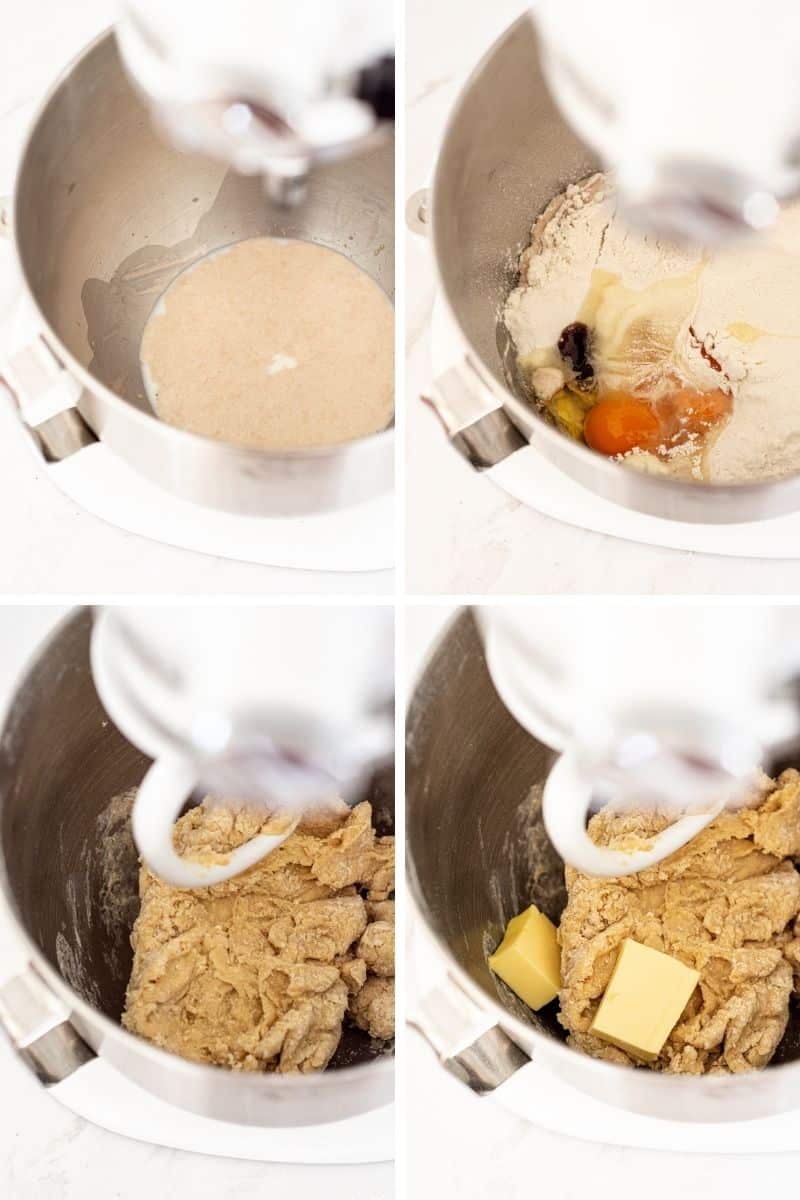
Add in the room temperature butter, a few cubes at a time. Incorporate each cube, either by hand or with the mixer, before the next addition.
Turn the mixer on medium speed, or begin kneading until the sticky dough starts to strengthen and come together. In the mixer, it should pull away cleanly from the sides of the bowl. For the best gluten development and brioche crumb, keep the dough mixing for at least 10 minutes. The dough should feel smooth, soft, and strong.
Shape the dough into a ball and place it into a lightly greased bowl. Cover the bowl with a lid, plate, plastic wrap, or a damp tea towel, and let it proof at room temperature until doubled in size. *If making the dough overnight, it can do its rising in the fridge overnight instead

The curd
In a microwave-proof bowl, whisk together the egg yolks, whole egg, and sugar until well combined. Whisk in the lemon juice and lemon zest.
Place the bowl in the microwave and cook in 40-second increments, stirring each time for around 3-4 minutes in total. This time may increase or decrease depending on your microwave strength.
Check that the curd is thick enough by dipping in a metal spoon. The curd should easily coat the back of the spoon.
Stir the cold cubed butter through the hot curd and stir until smooth. Pour the finished curd through a sieve into clean jars. It will thicken as it cools. Keep it in the fridge until ready to use.

Shaping
Punch down the dough and pull it from the bowl onto a lightly floured surface. Roll it into a ½ inch/ 1.3cm thick rectangle.
Use a cookie cutter or jar lid to cut out round donuts about 3.5 inches/9 cm in diameter. Place each cut donut onto some parchment paper.
Any scraps of dough can be kneaded back into a ball and rolled out again. Leave the dough ball to rest for at least 10 minutes before rolling out again. This allows the gluten to rest again so the dough doesn’t spring back when rolled.
Let the donuts rest for another hour until they are puffy. Use kitchen scissors to cut around each donut on the parchment paper so each donut is sitting on an individual piece of parchment.

Frying
When to ready to fry, pour the frying oil into a deep fryer or a deep pot and heat it to around 340°F / 171°C – 347°F / 175°C.
Carefully drop 1-2 donuts into the oil and remove the parchment paper with tongs. Fry the donuts for 2 minutes, then flip them and fry for a further 2 minutes on the other side.
Ensure the oil in the pot stays hot, but don’t let it surpass 350°F / 177°C or the donuts will burn before they have a chance to cook in the middle.
Let the fried donuts drain on a rack and cool completely before filling.

Filling
Scoop the lemon curd into a piping bag fitted with a round tip. Insert the tip of a small knife into the side of each donut to make a hole for the filling.
Pipe the curd through the hole into each donut. Place the filled donuts onto a wire rack and dust them generously with powdered sugar all over.

Serving
The lemon curd donuts are best immediately. Leftover lemon curd donuts can be stored covered at room temperature for up to 2 days.
Related recipes


Lemon Curd Donuts
These lemon curd donuts are made with soft brioche dough and filled with sweet and tangy lemon curd.
Ingredients
- 120ml (1/2 cup) warm milk at 95-104°F / 35-40°C
- 25g (2 Tablespoons) granulated sugar
- 1 ½ teaspoon instant yeast or active dried yeast
- 375g (3 US cups*) all-purpose flour
- 2 large eggs
- ¾ teaspoon salt
- 1/2 teaspoon vanilla paste or extract
- 113g (1/2 cup) butter at room temperature
- Powdered sugar for dusting
Lemon curd
- 3 large egg yolks
- 1 large whole egg
- Pinch of salt
- 120g (½ cup) lemon juice
- 2 tablespoon lemon zest
- 165g (¾ cup + 1 Tablespoon) granulated sugar
- 100g (7 Tablespoons) cold butter, cubed
Frying
- Neutral vegetable oil - enough to fill the pot at least 3" deep.
Instructions
The dough
- In a bowl of a stand mixer fitted with a dough hook, or a mixing bowl, add the warm milk and stir in the yeast and sugar. If using active dry yeast, let this sit for 5-10 minutes until foamy.
- To the yeast mixture, add the eggs, flour, vanilla and salt. Turn the mixer on low speed or use your hands to combine until it forms a thick dough. Mix this dough for around 2 minutes to begin developing the gluten. It will be a stiff dough.
- Add in the room temperature butter, a few cubes at a time. Incorporate each cube, either by hand or with the mixer, before the next addition.
- Turn the mixer on medium speed, or begin kneading until the sticky dough starts to strengthen and come together. In the mixer, it should pull away cleanly from the sides of the bowl. For the best gluten development and brioche crumb, keep the dough mixing for at least 10 minutes. The dough should feel smooth, soft, and strong.
- Shape the dough into a ball and place it into a lightly greased bowl. Cover the bowl with a lid, plate, plastic wrap, or a damp tea towel, and let it proof at room temperature until doubled in size. *If making the dough overnight, it can do its rising in the fridge overnight instead.
The curd
- While the dough is rising, make the curd. In a microwave-proof bowl, whisk together the egg yolks, whole egg, and sugar until well combined. Whisk in the lemon juice and lemon zest.
- Place the bowl in the microwave and cook in 40-second increments, stirring each time for around 3-4 minutes in total. This time may increase or decrease depending on your microwave strength.
- Check that the curd is thick enough by dipping in a metal spoon. The curd should easily coat the back of the spoon.
- Stir the cold cubed butter through the hot curd and stir until smooth. Pour the finished curd through a sieve into clean jars. It will thicken as it cools. Keep it in the fridge until ready to use.
Shaping
- Punch down the dough and pull it from the bowl onto a lightly floured surface. Roll it into a ½ inch/ 1.3cm thick rectangle.
- Use a cookie cutter or jar lid to cut out round donuts about 3.5 inches/9 cm in diameter. Place each cut donut onto some parchment paper.
- Any scraps of dough can be kneaded back into a ball and rolled out again. Leave the dough ball to rest for at least 10 minutes before rolling out again. This allows the gluten to rest again so the dough doesn't spring back when rolled.
- Let the donuts rest for another hour until they are puffy. Use kitchen scissors to cut around each donut on the parchment paper so each donut is sitting on an individual piece of parchment.
Frying
- When to ready to fry, pour the frying oil into a deep fryer or a deep pot and heat it to around 340°F- 347°F (171°C- 175°C).
- Carefully drop 1-2 donuts into the oil and remove the parchment paper with tongs. Fry the donuts for 2 minutes, then flip them and fry for a further 2 minutes on the other side.
- If you're not using a deep fryer (which usually comes with a thermometer) you'll need a candy thermometer for this.
- Ensure the oil in the pot stays hot, but don't let it surpass 350°F / 177°C or the donuts will burn before they have a chance to cook in the middle.
- Continue with the rest of the donuts. Let the fried donuts drain on a rack and cool completely before filling.
Filling
- Scoop the lemon curd into a piping bag fitted with a round tip. Insert the tip of a small knife into the side of each donut to make a hole for the filling.
- Pipe the curd through the hole into each donut. Place the filled donuts onto a rack and dust them generously with powdered sugar all over.
- The filled donuts are best immediately. Leftover donuts can be stored covered at room temperature for up to 2 days.
Notes
*The cup sizes are US size which is smaller than metric cups. If using metric cups, reduce to 2 1/2 cups flour. For best results, use scales and measure in grams.
Recommended Products
As an Amazon Associate and member of other affiliate programs, I earn from qualifying purchases.
Nutrition Information:
Yield: 12 Serving Size: 1Amount Per Serving: Calories: 339Total Fat: 17gSaturated Fat: 10gTrans Fat: 1gUnsaturated Fat: 6gCholesterol: 102mgSodium: 147mgCarbohydrates: 41gFiber: 1gSugar: 17gProtein: 6g



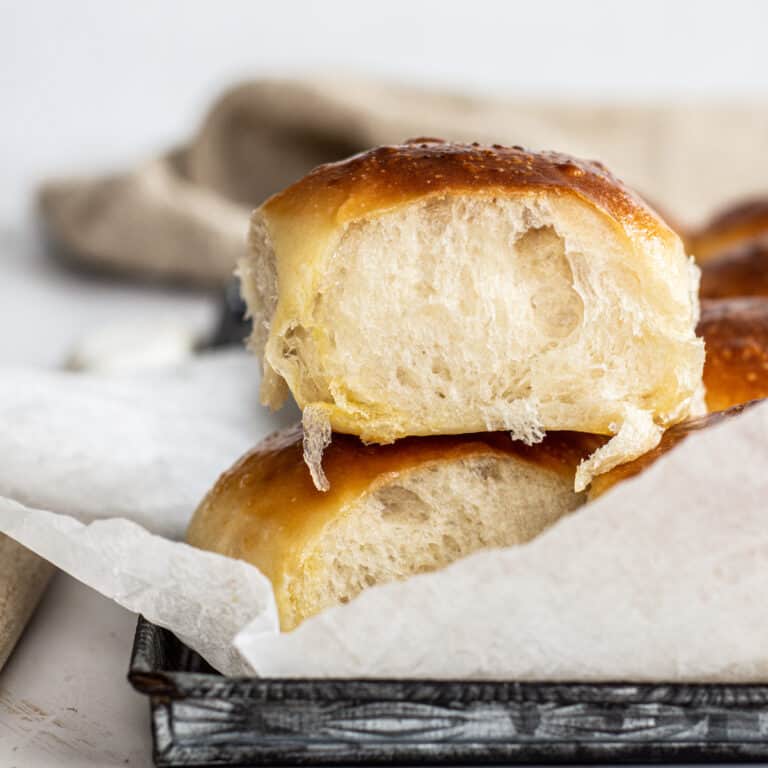
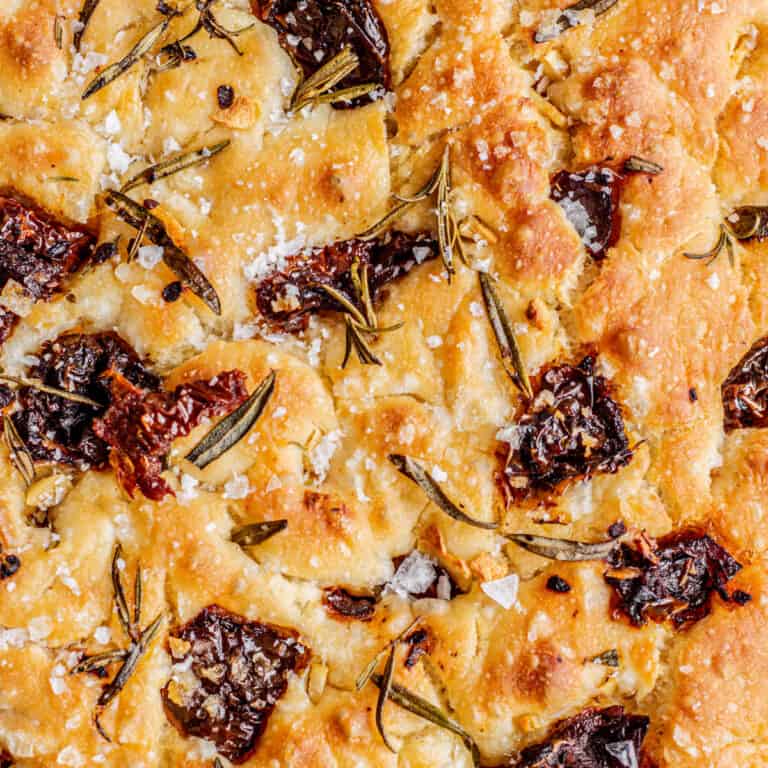

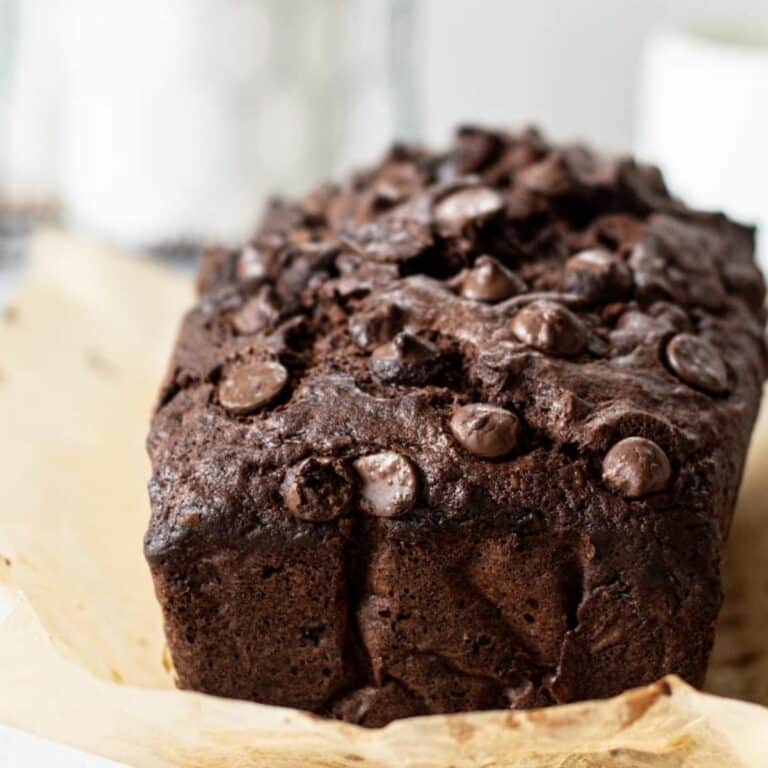
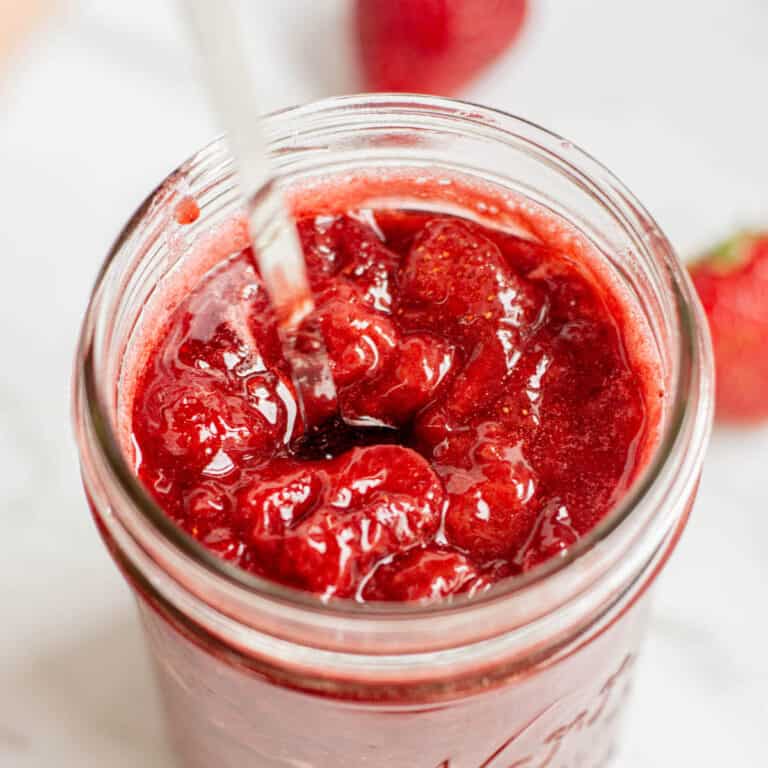
When does the vanilla go in?
With all the dough ingredients, have updated it 🙂 thanks!!
Can I get all the way to the point just before frying the night before?
I’d like to do most the work the night before and then fry in the morning so they are freshest. Rolling out and cutting the dough the night before… will the dough dry out or any other negative affect?
Hey Jill, doing that increases the risk of overproofing the doughnuts. I really suggest waiting until the morning to roll and cut them